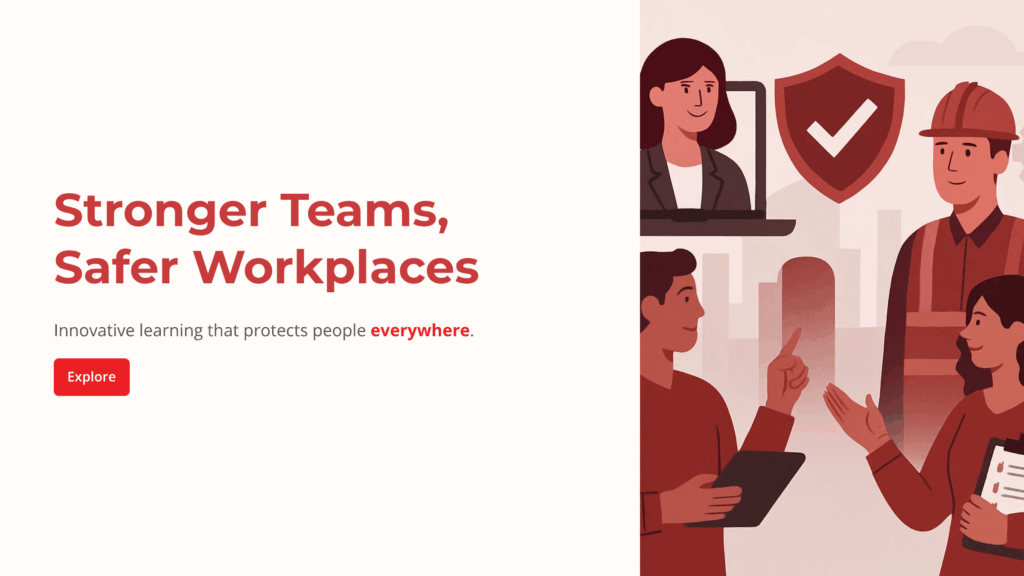
Occupational health and safety training online has become a critical priority as organisations increasingly rely on distributed teams. With employees working across offices, homes, and remote sites, the responsibility to maintain consistent safety standards has never been more complex.
Table of Contents
An effective online approach ensures every employee, regardless of location, understands the principles that protect their well-being and supports compliance with industry regulations. More than just meeting legal obligations, digital safety training creates a culture of shared responsibility, empowering teams to act confidently and prevent risks before they escalate.
Why Occupational Health and Safety Training Online Matters for Distributed Teams
Health and safety responsibilities don’t diminish when employees are dispersed; they expand. Distributed teams often face diverse working conditions, from home offices and coworking spaces to industrial sites and offshore environments. Without a consistent approach to occupational health and safety (OHS) training, gaps in knowledge can expose both employees and organisations to significant risk.
Beyond compliance, the benefits are tangible. Strong OHS training reduces accidents, prevents downtime, and lowers associated costs. It also builds employee confidence by equipping individuals with the knowledge to identify hazards and respond effectively. In distributed teams, this collective awareness fosters a stronger safety culture, reinforcing trust between employers and their workforce.
Best Practices for Delivering Compliance e-Learning
Designing effective OHS programmes for distributed teams requires more than simply moving existing content into a digital format. To achieve meaningful impact, online training should combine compliance with engagement, accessibility, and continuous improvement.
1. Align Training with Global and Local Regulations
Every workforce is shaped by its geographical and industry context. Remote workforce safety programmes should be modular, enabling organisations to adapt core content to meet both international standards and region-specific legislation. This approach ensures consistency while respecting local requirements.
2. Create Engaging, Interactive Content
Safety knowledge is most effective when it is applied, not memorised. Interactive learning methods (such as scenario-based exercises, digital simulations, and hazard-spotting activities) encourage employees to actively practise decision-making. These techniques increase retention and build confidence in real-world application.
3. Prioritise Accessibility and Inclusivity
Distributed teams are rarely uniform. Training must be designed for diverse learners, including those with disabilities, varying levels of digital literacy, or limited access to high-speed internet. Options such as closed captions, screen reader compatibility, and multilingual resources ensure everyone can participate fully.
4. Foster Collaboration and Shared Responsibility
Safety is a collective effort. Digital platforms can replicate collaborative learning by creating opportunities for peer-to-peer discussion, sharing experiences, and problem-solving together. This not only strengthens understanding but also reinforces a culture where every team member feels accountable for maintaining safe practices.
5. Measure Impact and Drive Continuous Improvement
Training should be dynamic, not static. Analytics tools enable organisations to monitor progress, track completion rates, and identify areas where further support is needed. Gathering employee feedback and refreshing content regularly ensures programmes stay relevant and responsive to emerging risks.
Our Approach to Remote Workforce Safety
Creating meaningful compliance e-learning for distributed teams requires solutions that are flexible, scalable, and tailored to organisational needs. Anderson Studios offers three levels of eLearning build, each designed to balance instructional depth with the right mix of media and technology. This tiered approach ensures every client can implement training that aligns with their goals, budget, and workforce requirements.
Level 1 – Basic Build
Ideal for organisations seeking a straightforward, professional solution, the Basic Build provides a strong foundation in online learning. It includes core instructional design, clean graphic layouts, essential Rise development, and structured project oversight. This option ensures essential safety content is delivered clearly and consistently to distributed teams.
Level 2 – Intermediate Build
For teams requiring a more dynamic and engaging experience, the Intermediate Build incorporates richer media elements such as motion graphics and enhanced Rise development. It also offers LMS customisation, ensuring training integrates seamlessly into existing systems. This level strikes a balance between interactivity and efficiency, supporting stronger learner engagement without unnecessary complexity.
Level 3 – Advanced Build
The Advanced Build is designed for organisations looking to deliver a fully immersive and highly customised eLearning solution. It features advanced Storyline development, multiple media layers, and full LMS theming. With senior-level Moodle development included, this build offers the highest degree of flexibility and sophistication: ideal for large-scale programmes where training must be impactful, interactive, and scalable across global teams.
Building a Safer Future for Distributed Teams
With flexible e-learning builds (from foundational to fully customised solutions) Anderson Studios helps organisations deliver training that not only meets obligations but also drives lasting behavioural change.
Ready to strengthen your occupational health and safety training online?
Get in touch with Anderson Studios today to explore how a tailored learning solution can keep your teams safe and prepared for the future.

